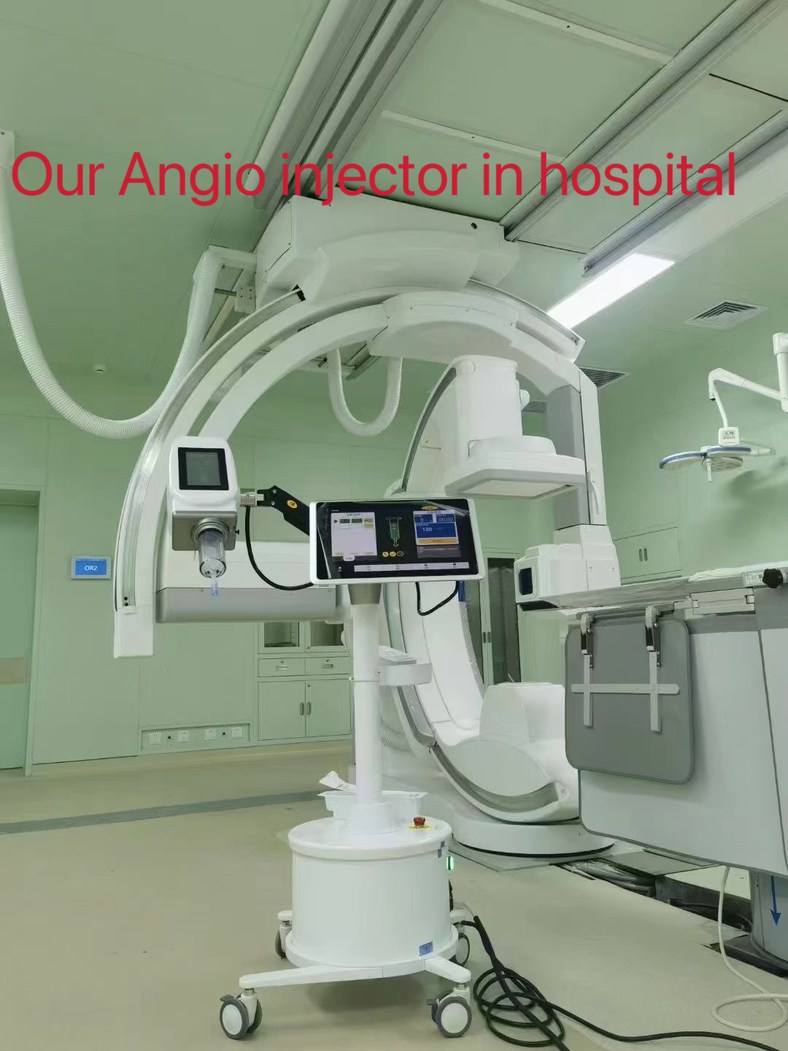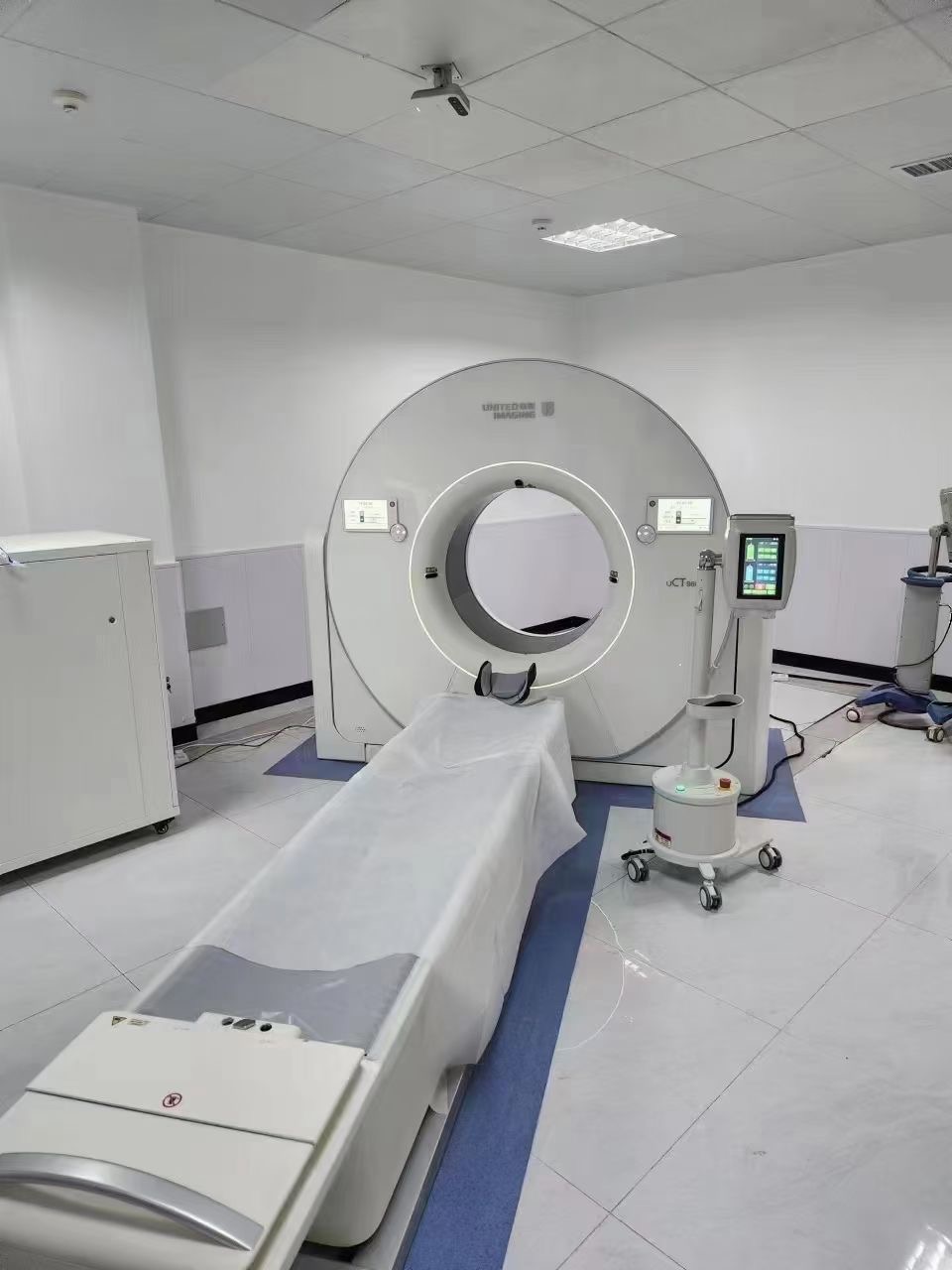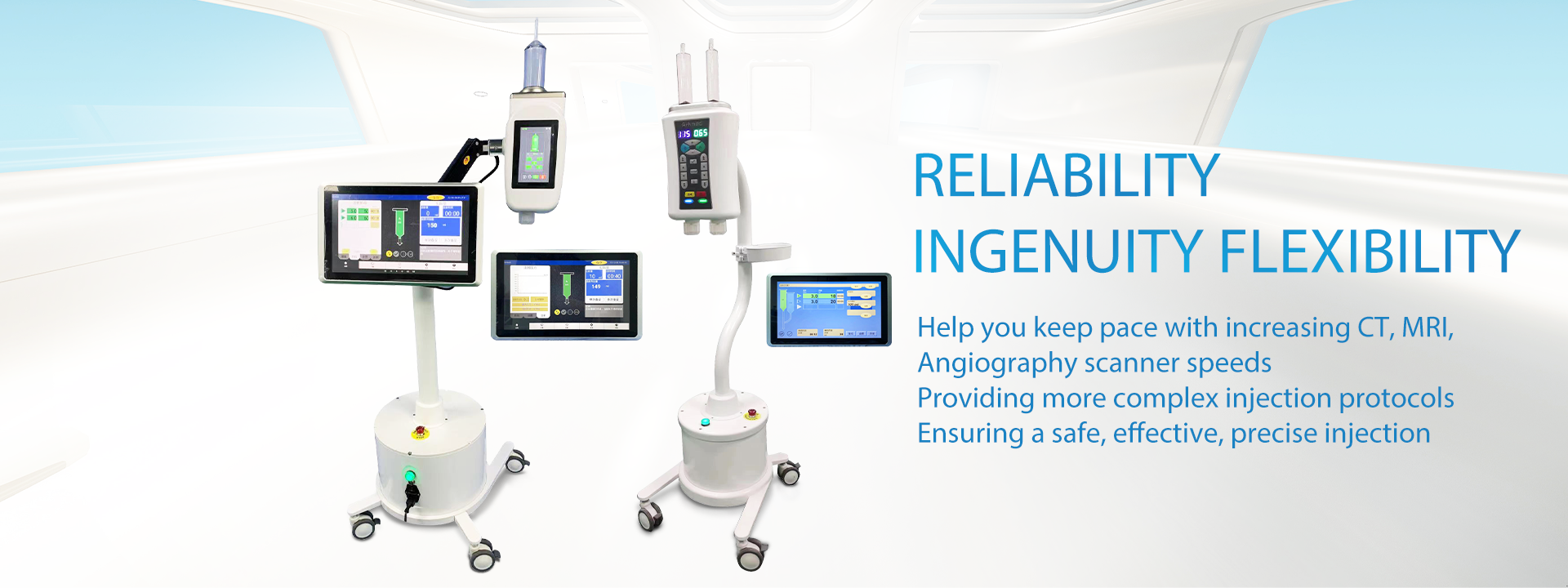In recent years, there has been a sharp rise in demand for mobile medical imaging systems, primarily due to their portability and the positive impact they have on patient outcomes. This trend was further accelerated by the pandemic, which highlighted the need for systems that could reduce infection risks by minimizing the crowding of patients and staff in imaging centers.
Worldwide, more than four billion imaging procedures are conducted annually, with the number expected to rise as diseases become more complex. The adoption of innovative mobile medical imaging solutions is anticipated to grow as healthcare providers seek portable and user-friendly devices to enhance patient care.
Mobile medical imaging technologies have become a revolutionary force, offering the ability to conduct diagnostics at a patient’s bedside or on-site. This presents significant advantages over traditional, stationary systems that require patients to visit hospitals or specialized centers, potentially exposing them to risks and consuming valuable time, particularly for critically ill individuals.
Additionally, mobile systems eliminate the need to transfer seriously ill patients between hospitals or departments, which helps prevent complications related to transportation, such as ventilator issues or loss of intravenous access. Not having to move patients also fosters quicker recovery, both for those undergoing imaging and for those not.
Advancements in technology have made systems like MRI, X-ray, ultrasound, and CT scanners more compact and mobile. This mobility allows them to be easily transported between various settings—whether clinical or non-clinical—such as ICUs, emergency rooms, operating theaters, doctors’ offices, and even patient homes. These portable solutions are particularly beneficial for underserved populations in remote or rural regions, helping to bridge healthcare gaps.
Mobile imaging technologies are packed with cutting-edge features, providing fast, accurate, and efficient diagnostics that improve health outcomes. Modern systems offer advanced image processing and noise reduction capabilities, ensuring clinicians receive clear, high-quality images. Moreover, mobile medical imaging contributes to cost reductions by avoiding unnecessary patient transfers and hospitalizations, adding further value to healthcare systems.
The influence of new mobile medical imaging technologies
MRI: Portable MRI systems have transformed the traditional image of MRI machines, which were once limited to hospitals, involved large installation and upkeep expenses, and resulted in lengthy wait times for patients. These mobile MRI units now allow for point-of-care (POC) clinical decisions, particularly in complex cases like brain injuries, by providing precise and detailed brain imaging directly at the patient’s bedside. This makes them crucial in handling time-sensitive neurological conditions such as strokes.
For example, Hyperfine’s development of the Swoop system has revolutionized portable MRI by integrating ultra-low-field magnetic resonance, radio waves, and artificial intelligence (AI). This system enables MRI scans to be performed at the POC, enhancing access to neuroimaging for critically ill patients. It is controlled via an Apple iPad Pro and can be set up within minutes, making it a practical tool for brain imaging in settings such as intensive care units (ICUs), pediatric wards, and other healthcare environments. The Swoop system is versatile and can be used for various conditions, including stroke, ventriculomegaly, and intracranial mass effects.
X-Ray: Mobile X-ray machines are designed to be lightweight, foldable, battery-operated, and compact, making them ideal for POC imaging. These devices are equipped with advanced image processing features and noise-reduction circuits that minimize signal interference and attenuation, producing clear X-ray images that offer high diagnostic value to healthcare professionals. The World Health Organization (WHO) notes that combining portable X-ray systems with AI-powered computer-aided detection (CAD) software greatly boosts diagnostic accuracy, efficiency, and effectiveness. WHO’s backing could play a crucial role in enhancing tuberculosis (TB) screening, especially in regions like the UAE, where 87.9% of the population consists of international migrants, many of whom come from TB-endemic areas.
Portable X-ray systems have a wide range of clinical uses, including diagnosing pneumonia, lung cancer, fractures, heart disease, kidney stones, infections, and pediatric conditions. These advanced mobile X-ray machines use high-frequency X-rays for precise delivery and superior image quality. For instance, Prognosys Medical Systems in India has introduced the Prorad Atlas Ultraportable X-ray system, a lightweight, portable device that features a microprocessor-controlled high-frequency X-ray generator, ensuring accurate X-ray output and top-quality images.
In particular, the Middle East is seeing rapid growth in mobile medical imaging, as international companies recognize its value and rising demand in the region. A notable example is the February 2024 partnership between the US-based United Imaging and Saudi Arabia’s Al Mana Group. This collaboration will see AI Mana Hospital positioned as a training and strategic center for digital mobile X-rays across Saudi Arabia and the wider Middle East.
Ultrasound: Mobile ultrasound technology encompasses a variety of devices, including wearable, wireless or wired handheld scanners and cart-based ultrasound machines featuring flexible, compact ultrasound arrays alongside linear and curved transducers. These scanners utilize artificial intelligence algorithms to identify various structures within the human torso, adjusting parameters such as frequency and depth of penetration automatically to enhance imaging quality. They are capable of conducting both superficial and deep anatomical imaging at the bedside, while also expediting data processing. This capability allows for detailed patient images that are critical for diagnosing conditions like decompensated heart failure, coronary artery disease, congenital fetal abnormalities, as well as pleural and pulmonary diseases. The teleultrasound functionality enables healthcare providers to share real-time images, videos, and audio with other medical professionals, facilitating remote consultations to optimize patient care. An example of this advancement is GE Healthcare’s introduction of the Vscan Air SL handheld ultrasound scanner at Arab Health 2024, designed to provide both shallow and deep imaging with remote feedback capabilities for swift and precise cardiac and vascular evaluations.
To promote the use of mobile ultrasound scanners, healthcare organizations in the Middle East are concentrating on enhancing the skills of their medical personnel through cutting-edge technology training. For instance, Sheikh Shakhbout Medical City, one of the largest hospitals in the UAE, established a point-of-care ultrasound (POCUS) academy in May 2022. This initiative aims to equip medical practitioners with AI-assisted POCUS devices to improve bedside patient examinations. Additionally, in February 2024, SEHA Virtual Hospital, one of the largest virtual healthcare facilities globally, successfully executed a landmark teleoperated ultrasound scan using Wosler’s Sonosystem. This event highlighted the telemedicine platform’s capability to enable healthcare professionals to provide timely and accurate patient care from any location.
CT: Mobile CT scanners are equipped to conduct full-body scans or target specific areas, such as the head, producing high-quality cross-sectional images (slices) of internal organs. These scans aid in identifying medical conditions including strokes, pneumonia, bronchial inflammation, brain injuries, and skull fractures. Mobile CT units minimize noise and metal artifacts, yielding improved contrast and clarity in imaging. Recent advancements include the incorporation of photon counting detectors (PCD) that provide ultra-high-resolution scans with remarkable clarity and detail, enhancing disease diagnosis. Moreover, an additional laminated lead layer in the mobile CT scanners helps reduce radiation scattering, offering operators increased protection and mitigating the long-term risks associated with radiation exposure.
For example, Neurologica has introduced the OmniTom Elite PCD scanner, which offers high-quality, non-contrast CT imaging. This device enhances differentiation between grey and white matter and effectively eliminates artifacts like streaking, beam hardening, and calcium blooming, even in difficult cases.
The Middle East faces significant challenges with cerebrovascular diseases, particularly strokes, with countries such as Saudi Arabia showing a high age-standardized stroke prevalence (1967.7 cases per 100,000 population). To address this public health issue, SEHA Virtual Hospital is providing virtual stroke care services utilizing CT scans, which aim to enhance diagnostic accuracy and expedite medical interventions to improve patient health outcomes.
Current Challenges and Future Directions
Mobile imaging technologies, particularly MRI and CT scanners, tend to have narrower bores and more confined interior spaces compared to traditional imaging systems. This design can lead to anxiety during imaging procedures, particularly for individuals who experience claustrophobia. To mitigate this issue, integrating an in-bore infotainment system that provides high-quality audio-visual content can assist patients in navigating the scanning process more comfortably. This immersive setup not only helps mask some of the machine’s operational sounds but also enables patients to hear the technologist’s instructions clearly, thereby reducing anxiety during scans.
Another critical issue facing mobile medical imaging is the cybersecurity of patients’ personal and health data, which is susceptible to cyber threats. Additionally, strict regulations concerning data privacy and sharing can hinder the acceptance of mobile medical imaging systems in the market. It is essential for industry stakeholders to implement strong data encryption and secure transmission protocols to protect patient information effectively.
Opportunities for Growth in Mobile Medical Imaging
Manufacturers of mobile medical imaging equipment should prioritize the development of new system modes that enable colored imaging capabilities. By leveraging AI technologies, the traditionally greyscale images produced by mobile ultrasound scanners could be enhanced with distinctive colors, patterns, and labels. This advancement would significantly aid clinicians in interpreting images, allowing for quicker identification of various components, such as fat, water, and calcium, as well as any abnormalities, which would facilitate more accurate diagnoses and tailored treatment plans for patients.
Moreover, companies developing CT and MRI scanners should consider integrating AI-driven triage tools into their devices. These tools can assist in rapidly assessing and prioritizing critical cases through advanced risk stratification algorithms, enabling healthcare providers to focus on high-risk patients in radiology worklists and expedite urgent diagnostic processes.
Additionally, a shift from the traditional one-time payment model prevalent among mobile medical imaging vendors to a subscription-based payment structure is necessary. This model would allow users to pay smaller, fixed fees for bundled services, including AI applications and remote feedback, rather than incurring a significant upfront cost. Such an approach could make the scanners more financially accessible and promote greater adoption among budget-conscious clients.
Furthermore, local governments in other Middle Eastern nations should consider implementing initiatives similar to the Healthcare Sandbox program established by the Saudi Ministry of Health (MoH). This initiative aims to create a safe and business-friendly experimental environment that fosters collaboration between public and private sectors to support the development of innovative healthcare technologies, including mobile medical imaging solutions.
Promoting Health Equity with Mobile Medical Imaging Systems
The integration of mobile medical imaging systems can facilitate a transition towards a more dynamic and patient-centered healthcare delivery model, enhancing care quality. By overcoming infrastructural and geographical barriers to accessing healthcare, these systems serve as vital tools in democratizing essential diagnostic services for patients. In doing so, mobile medical imaging systems can fundamentally redefine healthcare as a universal right rather than a privilege.
—————————————————————————————————————————————————————————————————————————————
LnkMed is a provider of products and services for the radiology field of the medical industry. The contrast medium high-pressure syringes developed and produced by our company, including CT single injector,CT double head injector,MRI injector and angiography contrast media injector, have been sold to about 300 units at home and abroad, and have won the praise of customers. At the same time, LnkMed also provides supporting needles and tubes such as consumables for the following brands: Medrad,Guerbet,Nemoto, etc., as well as positive pressure joints, ferromagnetic detectors and other medical products. LnkMed has always believed that quality is the cornerstone of development, and has been working hard to provide customers with high-quality products and services. If you are looking for medical imaging products, welcome to consult or negotiate with us.
Post time: Oct-22-2024











